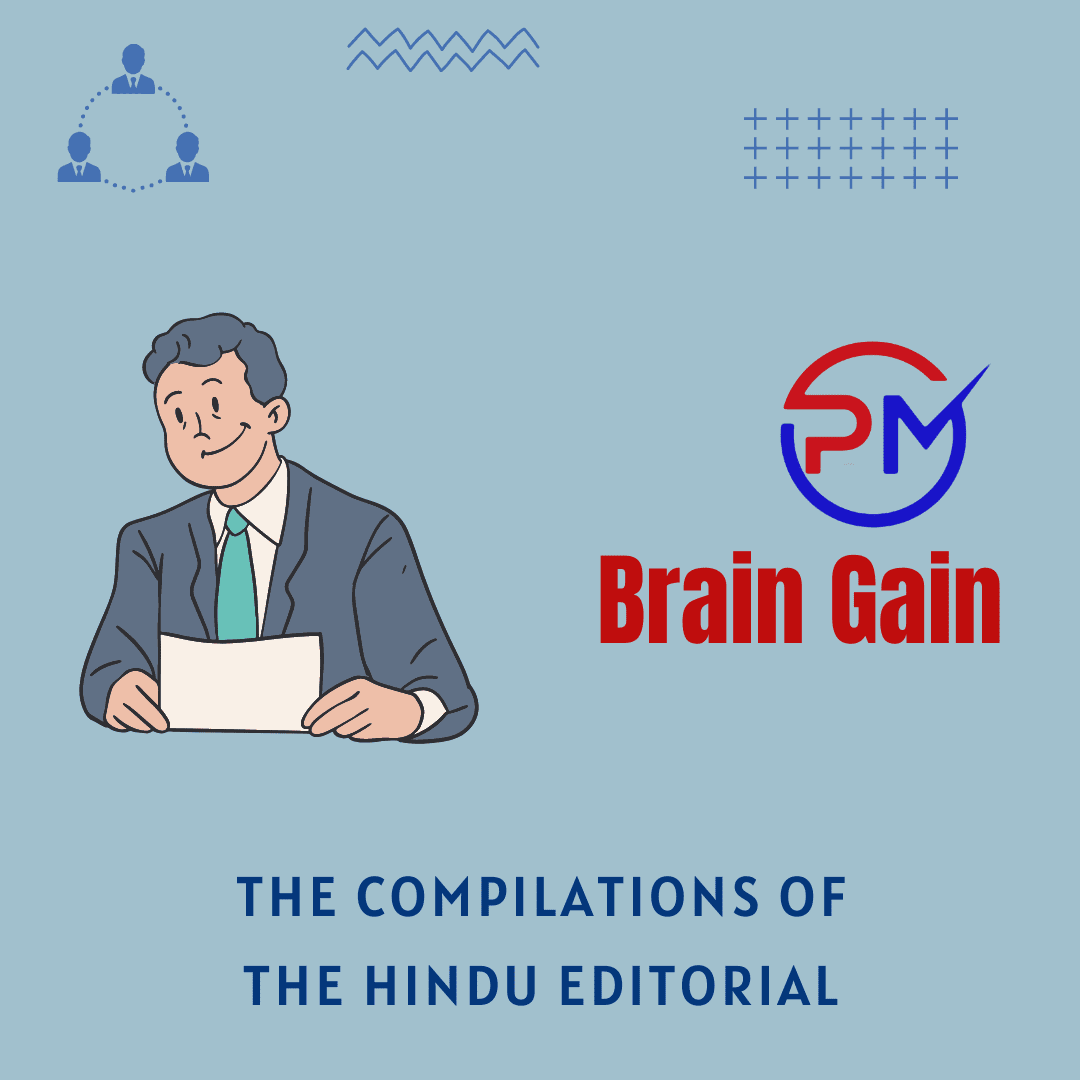Editorial 1: Genetic engineering gives mosquito control an upgrade
Context
- Throughout human history, mosquitoes have constantly buzzed in the background of human existence, irritating us with their incessant bites and occasionally wreaking havoc by transmitting deadly diseases.
About
- The earliest known mosquitoes from the fossil record date back at least 70 million years, and evidence of mosquito-borne diseases like malaria dates back to Egyptian mummies from 2000 BC.
- Apart from malaria, which claims the lives of over half a million people every year and infects close to 250 million, mosquitoes serve as vectors for various other diseases.
- These include dengue, Zika, lymphatic filariasis, and yellow fever. Understandably, our relationship with these tiny, blood-sucking insects has been far from cordial.
Help from sequencing tech
- The rapid urbanisation of the world’s populations, especially in many large and economically developing countries like India, has led to annual surges in mosquito-borne illnesses like dengue.
- Together with climate change and its cascading consequences, mosquito-borne diseases have expanded into new territories. A notable example is the indigenous cases of dengue in France in recent years.
- It is not surprising then that mosquito control has taken centerstage today and the battle continues unrelenting with an array of tools – from mosquito nets to insecticides and the use of symbionts like Wolbachia.
- But with insecticide resistance in mosquitoes rising to alarming proportions, it has become imperative that newer approaches to mosquito control gain prominence, even despite the availability of a first-generation malaria vaccine that officials in different countries are currently implementing in a pilot in endemic regions.
- Notably, researchers from the University of California, the Tata Institute of Genetics and Society, and the Institute of Bioinformatics and Applied Biotechnology have helped prepare high-quality reference genomes for Anopheles stephensi, a major malaria-vector mosquito.
- The availability of these high-quality sequences, coupled with our capacity to genetically manipulate them, offers unprecedented opportunities.
The gene drive
- The fundamental idea behind genetic manipulation of mosquitoes is to systematically control their populations by interfering with their reproduction.
- A major one in this endeavour is gene-drive technology, whose end result is for mosquitoes to selectively inherit some genes, rather than the inheritance to follow the rules of Mendelian genetics.
- Here, a protein cuts the mosquito’s DNA at a part that doesn’t encode a particular sequence in the genome.
- This triggers a natural mechanism in the cell containing the DNA to repair it and forces the cell to incorporate a sequence, called the drive sequence, into the damaged portion.
- As a result, the malaria parasite won’t be able to replicate inside the mosquito’s gut.
- In a recent paper, researchers at Imperial College London genetically enhanced a gene expressed in the midgut of mosquitoes to secrete two antimicrobial substances called magainin 2 and melittin.
- They are detrimental to the Plasmodium parasite’s development in the midgut and also reduce the lifespan of female mosquitoes.
- Computational modelling studies have suggested that this approach could significantly disrupt malaria transmission.
Benefits as well as risks
- In 2020, the U.S. Environmental Protection Agency authorised the release of a genetically modified mosquito called OX5034 in counties in Florida and Texas.
- Oxitec developed this mosquito with a gene sensitive to an antibiotic, tetracycline.
- Genetically modified male OX5034 mosquitoes mated with female mosquitoes but the self-limiting gene prevented female offspring from surviving.
- As a result, the male mosquitoes would disappear from the environment after around a dozen generations.
- These technologies can bring benefits as well as risks, in different ways. An immediate implication is that the drastic reduction in the mosquito population could alter food chains and ecosystems that involve mosquitoes.
- So it’s likely that the gap in the food chain could be ‘invaded’ by other mosquitoes or in fact other insects.
Way forward
- Critics have expressed concerns about unintended consequences, such as unforeseen ecological disruptions or the potential for engineered genes to spread beyond target mosquito populations.
- The battle between mosquitoes and humankind seems to be a timeless struggle, a testament to human ingenuity against frustrating troublemakers aided by evolution.
Editorial 2: Redouble efforts to reduce disaster risks
Context
- The G20 Summit and India’s success in disaster risk reduction are an opportunity to accelerate international cooperation and build resilience to risks.
About
- Risks are being created faster than they are being reduced.
- The aftershocks of the COVID-19 pandemic, combined with a polycrisis of war, debt, and food insecurity, are putting our collective ability to cope to the test.
- The rise in disasters is a trend, not an aberration. Headlines this year alone have brought a relentless wave of bad news across the world, from severe flooding in China to destructive wildfires in Europe and Hawaii to the hottest month ever on record in July.
- And perversely, it is the most vulnerable countries and communities which are paying the greatest price despite having contributed least to the problem.
- The majority of the 50 countries most vulnerable to climate change also suffer from severe debt issues.
- India, already among the world’s most disaster-prone countries, is experiencing this new reality acutely. In 2022, the country was battered by disasters or extreme weather nearly every day, while this year’s severe monsoon has caused widespread loss of livelihood and lives.
We have the solutions at hand
- First, we have the solutions for both adaptation and mitigation at hand.
- The SDGs remain our best blueprint for peace and prosperity, together with commitments made in Paris to limit global warming to 1.5°C, and the global framework for reducing disaster risks — the Sendai Framework for Disaster Risk Reduction.
- Eight years into the implementation of the Sendai Framework, progress is severely lacking.
- Many lessons are being learned from the COVID-19 pandemic, including on the importance of systems-wide disaster risk reduction, resilience, and adaptation.
- The crisis not only revealed our vulnerability to risk, but also forged new ways of working together, including through digital innovations, such as computer modelling and India’s CoWIN digital vaccine system.
- Another reason for optimism is India’s stewardship on disaster risk reduction.
- All the 28 States have prepared their own disaster management plans in recent years. Accordingly, mortality from extreme weather events has fallen drastically in recent years.
- India’s early warning system for cyclones covers the entire coastline and has helped reduce cyclone-related mortality by 90% over the last 15 years, while heat wave action plans at the local level have reduced heat wave deaths by over 90%.
- The recent zero death toll of Cyclone Biparjoy in Gujarat demonstrates what can be achieved through effective preparedness, response, and early warning and action systems.
- The 15th Finance Commission in India introduced significant reforms to disaster risk financing.
- With a total allocation of $28.6 billion at the national and State levels for a period of five years, the Government of India has provided sufficient resources for disaster preparedness, response, recovery, and capacity development.
- On the international stage, India is promoting disaster resilience and sustainability, including through the Coalition for Disaster Resilient Infrastructure, a global partnership for building resilience in infrastructure.
- India’s National Disaster Response Force responds to domestic disasters and is also regularly deployed to disaster zones around the world.
The transformations we need
- Disaster risk must be integrated at all levels, into how we build, how we invest, and how we live.
- One of the most cost-effective risk-reduction methods is early warning systems for all, spearheaded by the UN, with India’s support.
- Just a 24-hour warning of a coming storm can reduce the damage caused by 30%. Yet, over a third of the world’s population, mostly in least developed countries and Small Island Developing States, do not have access to such systems.
Way forward
- The ultimate goal is a global multi-risk warning system for all kinds of hazards, whether biological, tectonic, or technological.
- Improving global data capabilities will help us predict and respond to the risks we are facing. We commend India’s G20 presidency for its progress on knowledge sharing, joint data infrastructure, and risk analysis.
- Finally, we need to ensure that no one is left behind. We must enhance international cooperation in disaster prevention, response, and recovery, especially for the countries of the Global South.

